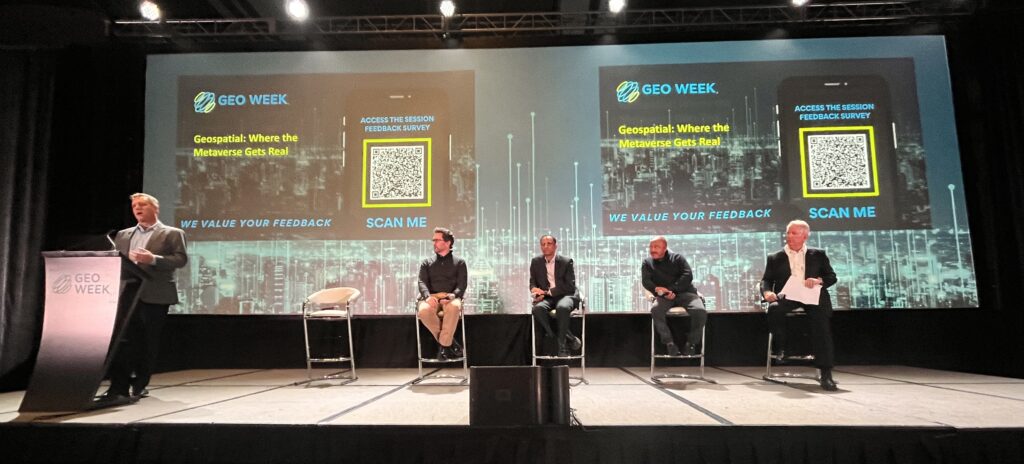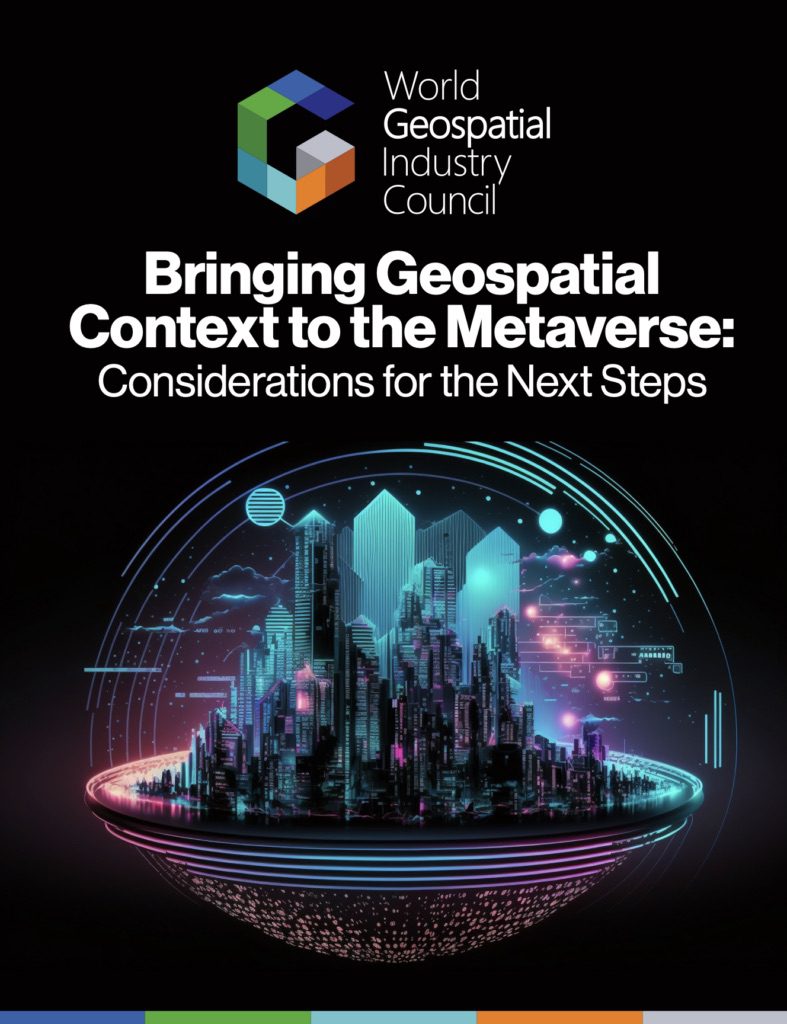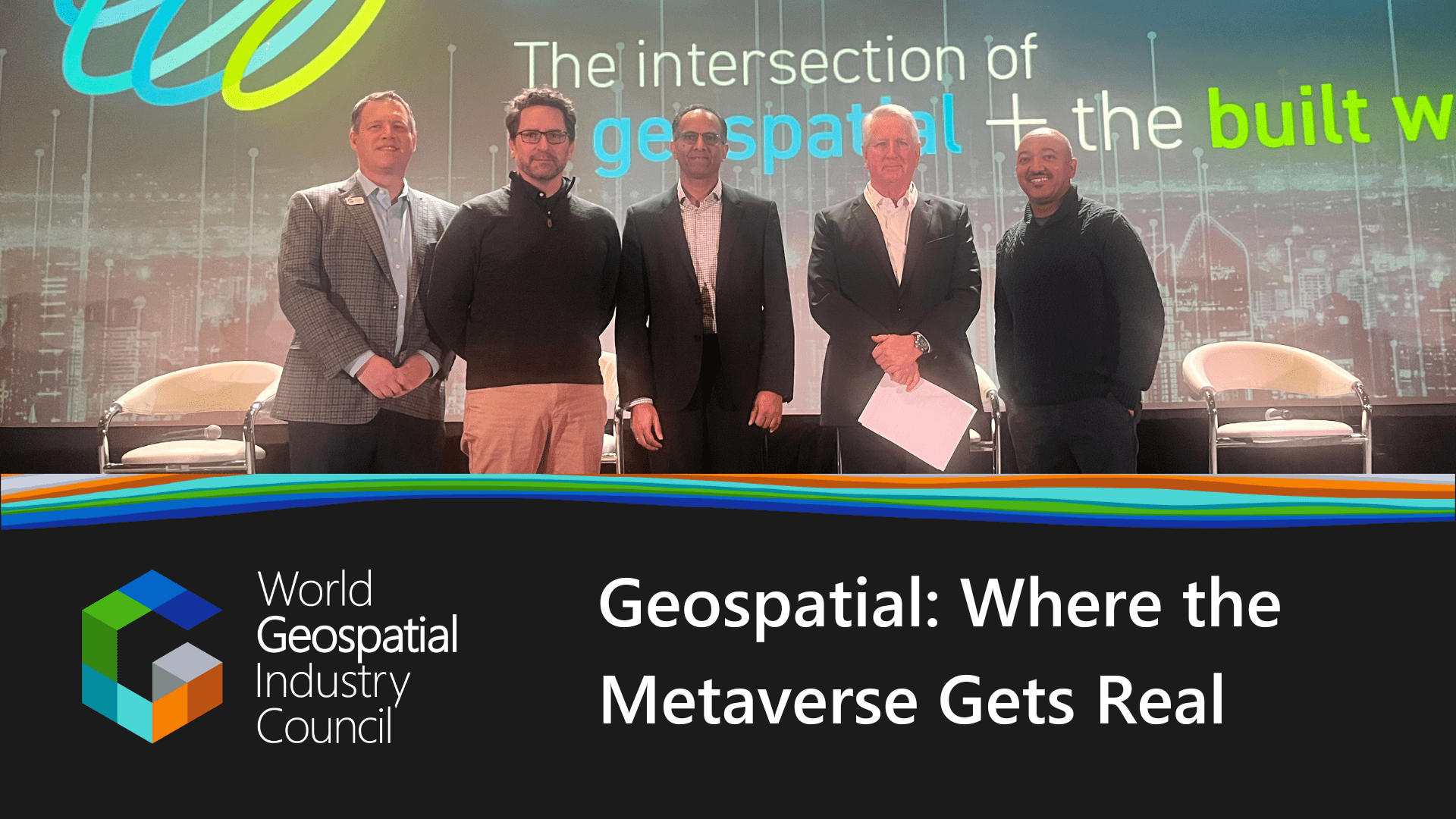During Geo Week 2024, WGIC hosted a panel discussion titled “Geospatial: Where the Metaverse Gets Real,” sparking discussions on the convergence of geospatial technology and the burgeoning Metaverse. Moderated by Aaron Addison, WGIC Executive Director, the panel featured valuable insights into this evolving landscape. The panelists were Siva Ravada, Vice President of Development at Oracle and WGIC’s Industry/Academia Committee Chair, James Van Rens, Senior Vice President at RIEGL and WGIC Patron Board member, Marius Swanepoel, Director Maps – Map Experts at TomTom North America and Tamrat Belayneh, Principal Technologist & Senior Software Engineer at Esri.

Setting the stage for the conversation, Addison provided a brief overview of WGIC’s efforts in navigating the evolving technological landscape within the geospatial industry, spanning from the Spatial Digital Twins report released a few years ago to the recent publication on the Metaverse. He highlighted the urgency of understanding the evolving landscape of the Metaverse within the geospatial domain. Addison acknowledged the perpetual evolution of the Metaverse, noting, “Even since the publication of our report less than six months ago, significant developments have occurred.”
Metaverse Standards
Metaverse is a relatively young concept. A year or two ago, numerous articles declared its demise, questioning its viability. “Yet, as we enter 2024, the narrative has shifted dramatically— the Metaverse is experiencing a resurgence, evident in its widespread presence and adoption,” noted Tamrat Belayneh from Esri. Belayneh emphasized the importance of standardization efforts within the geospatial industry. The geospatial domain offers valuable lessons for the Metaverse, particularly regarding interoperability and standardization, which have been foundational for geospatial for decades. “The maturity of geospatial technology contrasts with the nascent stage of the Metaverse,” said Belayneh.
As someone deeply entrenched in 3D work, whether it pertains to digital twins or Metaverse environments, he highlighted that “the visual component remains paramount. It’s not just about visuals but about immersive 3D experiences.” Belayneh underlined the need for such collaborative initiatives as the Open Geospatial Consortium (OGC) or the Metaverse Standards Forum that focus on establishing a lingua franca for digital twins or the Metaverse to facilitate seamless communication and trust in 3D content across platforms and devices.
The panelists opined that as these efforts progress and standards evolve, existing technologies and previous research will undoubtedly play a pivotal role in shaping the future of the Metaverse, contributing significantly to its development and maturation.
Data Integration: Realizing the Full Potential of the Metaverse
Addressing the challenges of integrating real-time data streams within the Metaverse, Siva Ravada from Oracle emphasized the transformative potential of cloud computing and machine learning. “People with a GIS background are intimately familiar with the complexities of integrating data from diverse sources,” noted Ravada. The complexities that occur because of the siloed datasets within the companies add to the complexity, creating multi-layered challenges for data integration.
With the emergence of the Metaverse, the challenge extends beyond merely wrangling disparate static datasets. “We are confronted with a deluge of real-time data from various sources, including sensors and online feeds,” said Ravada. He brought the example of the need to incorporate real-time readings from meters, such as electricity meters, to represent the physical world within the Metaverse accurately. Therefore, it is no longer just about data, it’s about signals and dynamic online elements reshaping our understanding of reality. Ravada’s question brings to light a pressing concern: traditional integration methods appear insufficient in the wake of this deluge of data. Considering that, how do we manage and integrate the vast array of disparate data streams effectively?
Fortunately, recent technological advancements offer promising solutions. Cloud computing, for example, has revolutionized the landscape by enabling the creation of interoperable web services. “This means that data sources can be seamlessly discovered and integrated using standardized protocols, making the integration of diverse datasets more feasible than ever before,” said Ravada. Additionally, machine learning, particularly advanced algorithms beyond just large language models, presents a significant opportunity. Ravada notes that “these algorithms have the potential to learn from new datasets as they arrive, facilitating their integration into enterprise systems with greater efficiency and accuracy.”
AI-powered Data Integration into the Metaverse
Marius Swanepoel of TomTom North America delved into the evolving consumer expectations in the digital age, particularly regarding real-time data updates. He started by noting that just a couple of years ago, a handful of companies dominated the landscape—they owned the data, controlled the technology, and virtually monopolized the industry. “This centralized control stifled technological growth, hindering innovation. However, the scene has dramatically shifted now. Almost every company, from large corporations to startups, is actively engaged in data collection,” said Swanepoel.
The sheer volume of data being amassed is staggering, making it increasingly challenging to derive meaningful insights from individual datasets. “Unless you are a tech giant like Google, attempting to tackle this monumental task alone is virtually impossible,” noted Swanepoel. Considering this, he emphasized the indispensable role of artificial intelligence (AI) in rapidly processing vast amounts of data, ensuring its relevance and actionable nature.
The other aspect is the dramatic shift in customer expectations. If, in the past, we had paper maps that were several years old and yet served their purpose, today, a map that’s merely five minutes old feels outdated and inadequate. “We demand real-time updates and accuracy,” says Swanepoel. This shift in consumer expectations once again underscores the growing importance of technologies like AI. AI enables us to process data at an unprecedented speed and scale, addressing the challenge of effectively managing large volumes of information. In addition, leveraging machine learning (ML) algorithms allows us to analyze data and extract insights rapidly, keeping pace with the dynamic nature of information in real-time.
Emphasizing the role of collaboration, Swanepoel expressed his belief that “if we are to make significant strides in providing valuable services to the community, then continuously duplicating efforts, with each company collecting the same data independently, only hampers the collective progress.” This adds to Swanepoel’s observation that in today’s landscape, data is becoming commoditized—a resource expected to be readily available and of high quality. Yet, few are willing to pay for it. This poses a significant challenge for commercial entities striving to add value and remain competitive.
As Swanepoel suggests, entering such initiatives as the Overture Foundation, which aggregates and maintains top-tier, current, and inclusive map data from various sources, represents a collaborative effort to establish a shared platform accessible to everyone at no cost. Collaborative pooling of resources and expertise establishes a robust groundwork for innovation and growth, allowing companies to concentrate on their distinctive strengths rather than duplicating efforts. This approach fosters interoperability, encourages data sharing, and facilitates more efficient collaboration with government and open data sources.
In essence, by working together, we are not only streamlining processes but also unlocking the full potential of our collective efforts.
Data Integrity and Visualization in Metaverse
James Van Rens, representing RIEGL USA, emphasized the criticality of accurate visualization and data integrity within the Metaverse. He highlighted the vital role of the geospatial community in ensuring precise representations of the physical world, which is essential for informed decision-making. Van Rens encapsulated this notion: “Without the geospatial community and their focus on making precise, accurate 3D visualizations a reality, it’s garbage in, garbage out.”
As our industry progresses from 2D to 3D, the significance of accurate and immersive visualization becomes increasingly evident. Achieving spatial authenticity is paramount, ensuring that representations closely resemble the real world rather than artificial renderings.
The convergence of digital twins, artificial intelligence, and the Metaverse signals a transformative era where these technologies synergize to unlock unprecedented capabilities. Yet, amidst this convergence, the geospatial community’s dedication to crafting precise and accurate 3D visualizations remains indispensable. Therefore, “alongside advocating for interoperability, let’s underscore the critical role of the geospatial community in ensuring the integrity and fidelity of data within the Metaverse,” said Van Rens. By championing precise visualizations, we pave the way for meaningful insights and informed decision-making within this dynamic digital landscape.
The panel discussion offered a comprehensive understanding of the opportunities and challenges at the intersection of geospatial technology and the Metaverse. The panel summed up that as the Metaverse continues to evolve, collaboration, technological advancements, and a steadfast commitment to data integrity will be instrumental in unlocking its full potential.

Bringing Geospatial Context to the Metaverse: Considerations for the Next Steps Report
The policy report brings geospatial context to the metaverse and provides specific considerations for the next steps toward expanding the value proposition of geospatial technology. The report examines the opportunities and risks for the geospatial industry in the burgeoning commercial metaverse market, estimated to be several trillion dollars in the next two to three decades.


